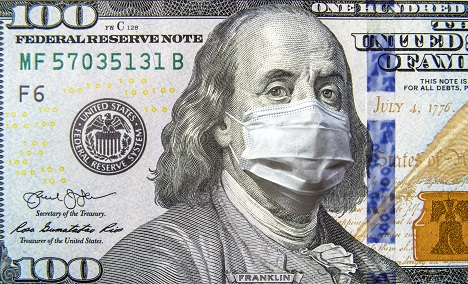It’s clear that COVID-19 is going to make for a tough winter. But for the first time, a clear end to the pandemic is in sight.
Both Pfizer (NYSE: PFE) and Moderna (Nasdaq: MRNA) announced that they have created vaccines that are more than 90% effective.
There were no guarantees that an effective vaccine was going to happen – so those are exciting results.
By the third quarter of next year, experts believe that we will have, for the most part, put COVID-19 behind us.
I can’t wait.
But as investors, we need to start positioning ourselves for a post-pandemic world…
Historic Consequences
When COVID-19 broke out in the United States, the government responded in a big way to try to rescue the economy.
It had to be done. The economic shock from closing our economy was unlike anything we had ever seen before.
The result is that in 2020, the U.S. federal deficit will exceed $3 trillion. That is more than double the previous record deficit hit in 2009 during the financial crisis.
And as I recently wrote, interest rates have been pushed down to 5,000-year lows…
The Federal Reserve’s balance sheet has ballooned from $4 trillion at the start of the year to $7.2 trillion in just a few months. We have added 100 years of debt in half a year.
An incredible 21% of all U.S. dollars ever printed will have been printed in 2020!
They must have worn out the printing press…
The government has thrown everything and the kitchen sink at the economy to try to minimize the damage from COVID-19.
But as with all powerful treatments, this market medicine has some serious side effects…
Protect Yourself Now
Billionaire mogul John Malone believes that he knows what is coming once the pandemic ends.
Malone has been aggressively making moves to protect his wealth from currency devaluation.
That wouldn’t be surprising given how much money is flying around and how low interest rates are. It is the perfect recipe for weakening the purchasing power of the dollar.
Malone has been buying up hard assets, which he believes will increase in value as currencies weaken.
When I say “hard assets,” I’m talking about tangible things like real estate, commodities and precious metals.
You want to be an owner of hard assets going into currency devaluation, not someone who has to purchase them as their value increases.
In 2020, Malone has purchased substantial interests in multifamily housing and farmland.
We have been on the real estate train here at Wealthy Retirement since May, when I pounded the table on homebuilders.
I thought these companies were perfectly positioned to profit from record-low rates, a decadelong shortage of building and pent-up demand for first-time homebuyers. I saw a strong future for real estate prices and demand.
That hypothesis has worked out very well, with the sector’s return more than doubling the return of the S&P 500 since I brought it to your attention.
I still like homebuilders for the longer term, and I have other “hard asset” ideas that I think are set to outperform as well.
Look for more on that in the coming weeks and months as we get our portfolios ready for a post-pandemic world…
We need to be quick on this because the market is a forward-looking mechanism and will start bidding prices up before the pandemic ends.
Good investing,
Jody


